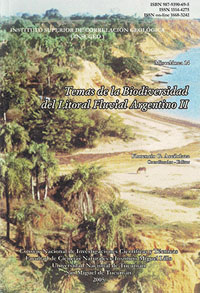Miscelánea 14
Peces marinos y continentales del Mioceno del área mesopotámica argentina. Edad y relaciones biogeográficas
Alberto Luis Cione | Jorge Rafael Casciotta | María de las Mercedes Azpelicueta | María Julia Barla | Mario Alberto Cozzuol
Para adquirir la publicación haga click aquí
Abstract
MARINE AND CONTINENTAL FISHES OF MIOCENE IN THE ARGENTINE MESOPOTAMIAN AREA.AGE AND BIOGEOGRAPHIC RELATIONS.- Recently, a new locality with brazilian fishes was described from the Miocene of Patagonia by Cione and others. However, the most renown localities are located in the Paraná eastern riverside cliffs near the city of Paraná, Entre Ríos province, Argentina. These localities yielded many freshwater, marine, and terrestrial vertebrates of Miocene and Pleistocene age which in many cases are presently in study. Miocene fossils come almost exclusively from the Paraná Formation (marine and freshwater taxa: elasmobranchs, teleosteans, cetaceans, sirenians and pinnipeds) and the “Conglomerado osífero” (“Bony conglomerate;” “Mesopotamiense” autorum) at the base of the continental Ituzaingó Formation (marine, freshwater and terrestrial taxa: elasmobranchs, teleosteans, crocodilians, chelonians, birds, and different groups of mammals).
Cetaceans suggest a Tortonian (late Miocene) age for the top of the Paraná Formation. The terrestrial mammal fauna suggests a Huayquerian age (Tortonian) for the base of the Ituzaingó Formation. Both the terrestrial and freshwater fauna of the Ituzaingó Formation indicates a climate warmer than present. The freshwater vertebrate record suggests important basin conections with Amazonian basins.




